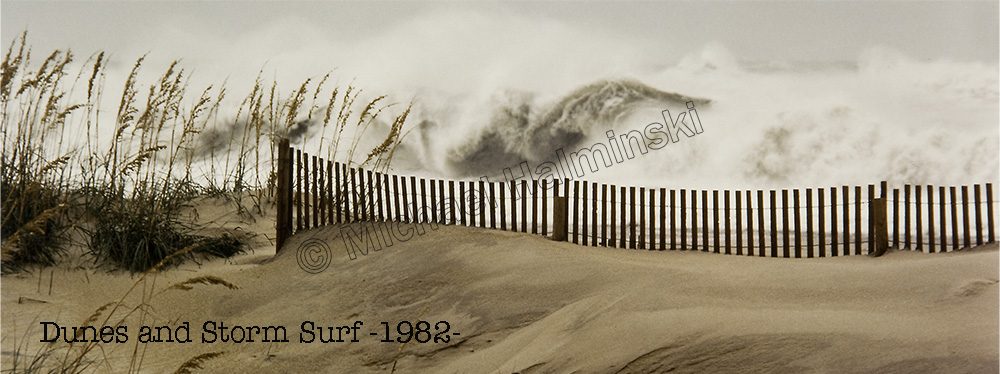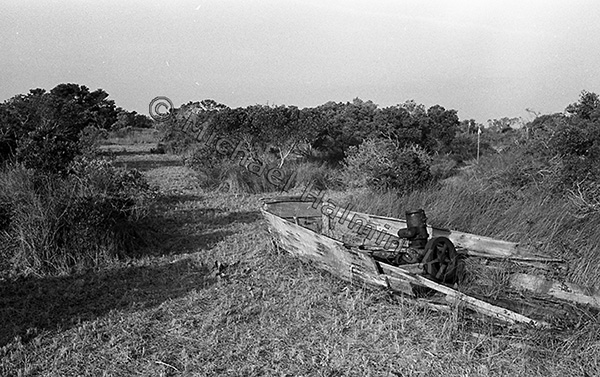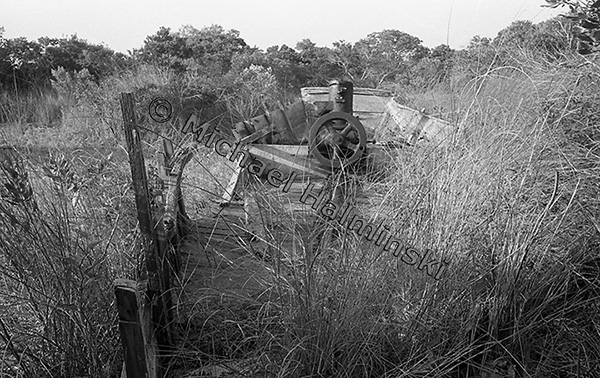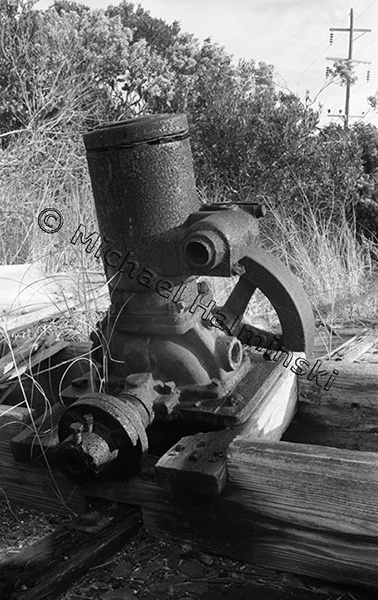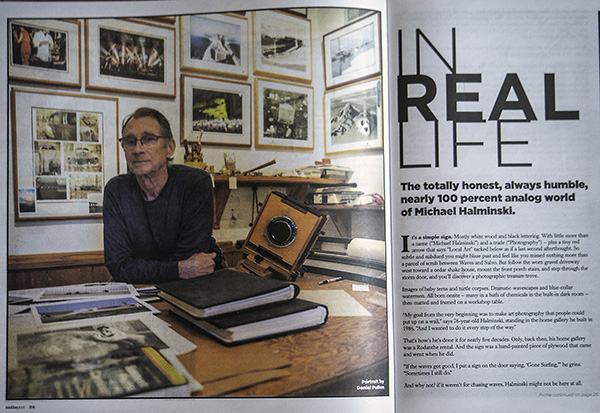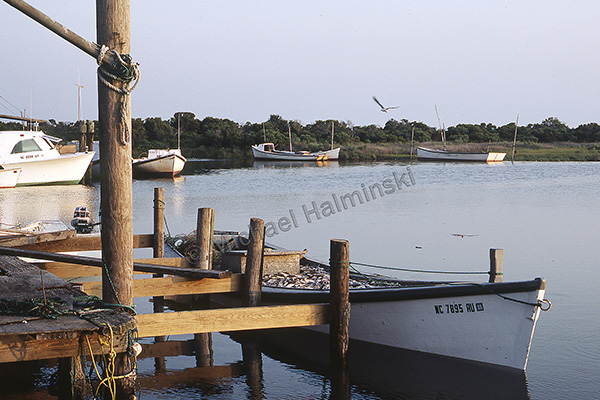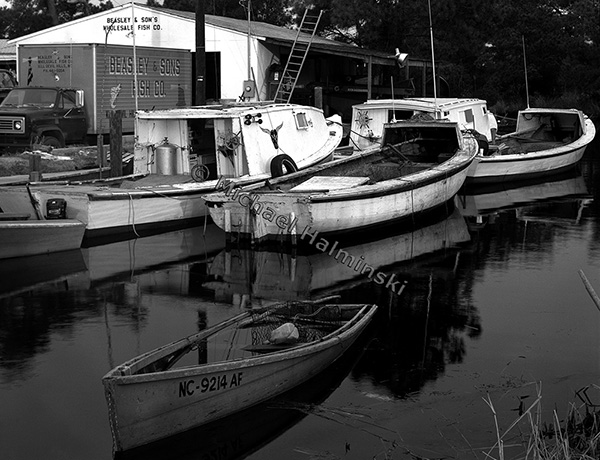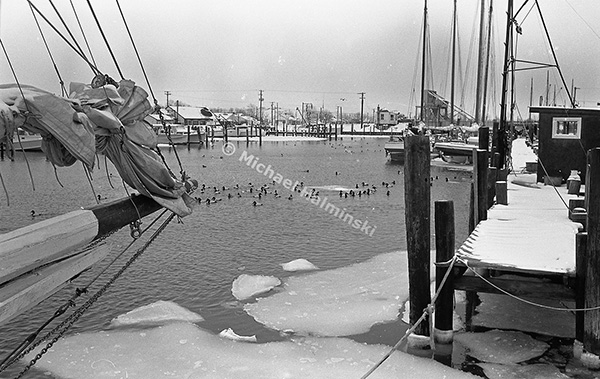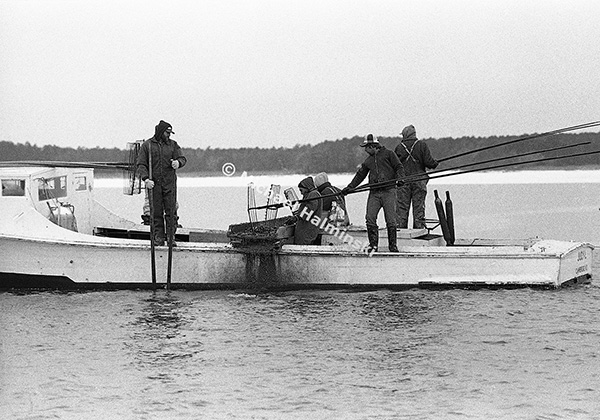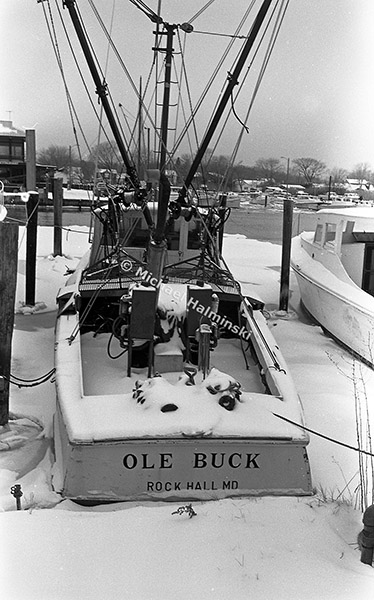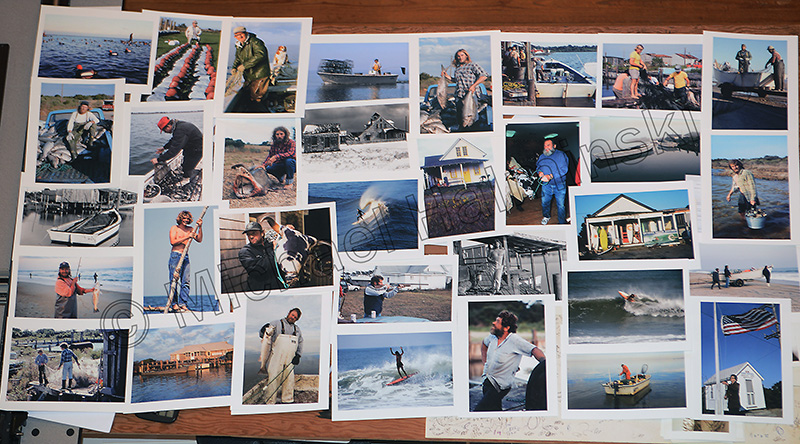Back in the 70’s, Woodrow Edwards was our postmaster in the village of Waves. The post office located in his home had maybe a dozen PO boxes and general delivery. Woodrow was always engaging. Current events, the weather or politics, you never knew what the morning’s topic might be. It wasn’t uncommon for him to ask for some help around the house. One day he asked me to help clear some vacant lots across the highway. I’d get the going rate of $3 an hour. I hardly ever turned Woodrow down.
Upon clearing the land, we discovered the remains of an old boat. Still on board was a curious looking motor. Woodrow called it a One Lunger, dating back to the 1920’s or 30’s. It was made of cast iron, and extremely heavy.
After removing some vegetation the shape of the boat became more apparent.
The narrow stern indicated this must have been a sail skiff converted to engine power. It was about 20 feet in length.
With no transmission attached, it must have been direct drive. As soon as it starts, you’re underway.
Remnants of the engine may still be there, although the wooden carcass long gone.
These engines were also known as “Make and Break Engines”. Click this link to see one running.
